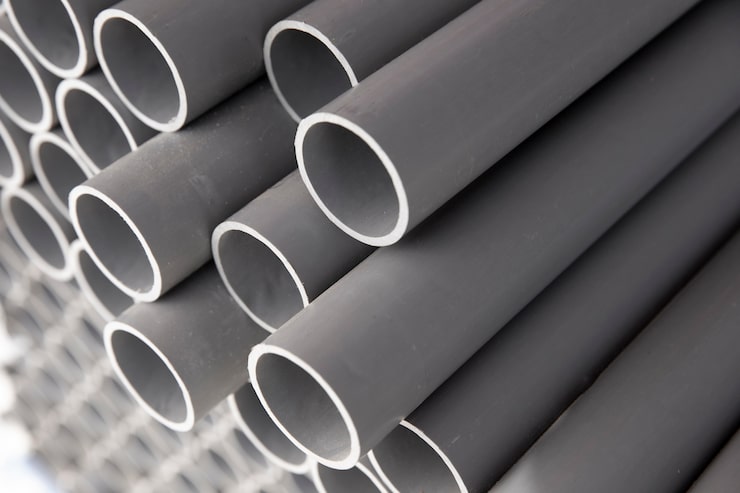What's the difference between piping and plumbing is a common question for people involved in construction, engineering, or facility management. While both terms refer to systems of pipes used to transport fluids, gases, or sometimes solids, their purposes, design standards, and applications are different. Understanding these differences is important for engineers, contractors, and building owners to ensure proper system design, compliance with regulations, and efficient operation. Both piping and plumbing are critical parts of modern infrastructure, but they serve distinct roles in residential, commercial, and industrial environments.
Piping generally refers to industrial or process piping systems designed to transport fluids or gases for manufacturing, energy generation, chemical processing, or other industrial purposes. Plumbing, on the other hand, is primarily concerned with water supply, drainage, and sanitary systems in buildings for human use. While they may share similar materials and installation techniques, their design criteria, pressure ratings, and regulatory codes differ significantly.

Purpose and function
The main purpose of piping is to transport process fluids—such as steam, chemicals, petroleum products, compressed gases, or slurries—within industrial facilities. These systems are part of production processes, energy plants, refineries, and factories. The fluids transported can be at high pressures and temperatures, requiring precise engineering and strict safety controls.
Plumbing systems, in contrast, are designed for the delivery of potable water, removal of wastewater, and sometimes distribution of gas in residential, commercial, or institutional buildings. The focus is on sanitation, hygiene, and comfort for occupants, ensuring clean water is available for drinking, cooking, and washing, and that waste is safely removed.
Standards and regulations
Piping and plumbing follow different sets of standards and codes. Industrial piping is often designed according to ASME (American Society of Mechanical Engineers) standards such as the ASME B31 series, API (American Petroleum Institute) specifications, or ISO guidelines. These standards address pressure ratings, welding procedures, material compatibility, and safety requirements for industrial environments.
Plumbing, on the other hand, is regulated by building codes such as the International Plumbing Code (IPC) or Uniform Plumbing Code (UPC) in many regions. These codes focus on health and safety for occupants, ensuring potable water quality, proper venting, and effective drainage.
Materials used
While there is some overlap in materials, piping systems often use carbon steel, stainless steel, alloy steels, and specialized plastics or composites designed for high pressure and temperature. Material selection depends on corrosion resistance, chemical compatibility, and mechanical strength.
Plumbing systems frequently use copper, PEX (cross-linked polyethylene), PVC (polyvinyl chloride), CPVC (chlorinated polyvinyl chloride), and galvanized steel. The materials are chosen for their potable water safety, ease of installation, and resistance to scaling or corrosion in domestic environments.
Design considerations
In industrial piping, design must account for:
Flow rate and velocity control to maintain process efficiency.
Thermal expansion and contraction due to high temperature variations.
Pressure containment for systems operating under extreme conditions.
Chemical compatibility with transported media.
Maintenance and inspection access for large, complex networks.
Plumbing design focuses on:
Adequate water pressure for all fixtures.
Prevention of cross-contamination between potable and non-potable water.
Proper venting to avoid siphoning in drainage systems.
Sizing of drainage pipes to prevent blockages.
Minimizing noise and vibration in supply lines.
Installation practices
Piping installation often requires highly skilled welders, fitters, and technicians familiar with industrial safety protocols. Many joints are welded or flanged, and the systems are pressure tested at higher levels than they will operate to verify strength and leak resistance.
Plumbing installation can involve soldering copper pipes, crimping PEX connections, gluing PVC joints, or threading steel pipes. While the skill requirements are different, plumbers must still comply with safety standards, especially regarding potable water systems and gas lines.
Maintenance requirements
Piping systems in industrial facilities undergo regular inspections using non-destructive testing methods like ultrasonic testing, radiography, or hydrostatic pressure tests. Maintenance may involve replacing worn gaskets, valves, or corroded pipe sections. These activities are critical to prevent costly downtime and ensure worker safety.
Plumbing systems require periodic checks for leaks, water pressure issues, clogged drains, and corrosion in older pipes. Preventive maintenance ensures water quality, avoids property damage, and prolongs the system’s lifespan.
Operating pressures and temperatures
A key difference lies in operating conditions. Industrial piping often handles fluids at very high pressures and temperatures—steam lines in power plants may operate at pressures above 1,000 psi and temperatures exceeding 500°C. Plumbing systems typically operate at much lower pressures (usually under 80 psi) and ambient or moderately heated water temperatures.
Applications
Piping applications include:
Chemical plant process lines.
Oil refinery pipelines.
Steam and condensate systems.
Compressed air and gas distribution.
Cryogenic piping for liquefied gases.
Plumbing applications include:
Potable water supply lines.
Drainage and vent systems.
Gas piping for residential or commercial use.
Fire protection systems within buildings.
Irrigation systems for landscaping.
Safety considerations
Safety protocols differ due to the nature of the fluids transported. Piping systems may require specialized insulation, heat tracing, or protective coatings to handle hazardous or high-energy fluids. Workers must follow lockout/tagout procedures, wear protective equipment, and adhere to confined space safety rules.
Plumbing systems focus more on preventing contamination of drinking water, avoiding gas leaks, and ensuring safe venting of sewer gases. Anti-backflow devices, pressure-reducing valves, and proper sealing are standard safety measures.
Industry roles
In the industrial sector, piping engineers design systems to optimize production efficiency, while pipefitters and welders handle fabrication and installation. In the building sector, plumbers design and install systems that meet occupant needs while complying with health regulations. Both fields require technical expertise, but the scope of work and training pathways can differ greatly.
Emerging technologies
Both piping and plumbing are adapting to technological advancements. Industrial piping benefits from smart sensors, digital twins, and automated welding systems. Plumbing sees innovations like water-saving fixtures, leak detection systems, and flexible piping materials that reduce installation time.


